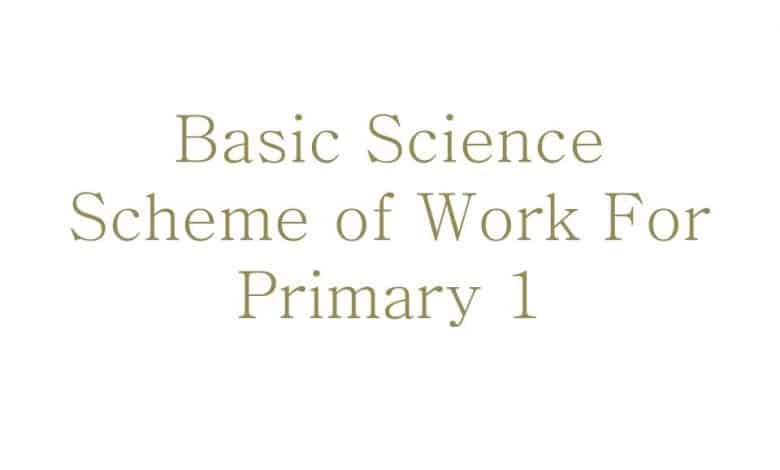Scheme of Work For Basic Science Primary 1

This article provides you with the Basic Science scheme of work and the curriculum for the first term, second term, and third term for primary 1 pupil.
First term
Observation and identification of things in and around the class room
- Things in and around the class room
- Drawing some things found in the class
Observation and identification of things in and around the school
Pupils should be able to:
- observe and identify things around the school, playground, school farm and garden
- name some of the things found on the playground, school farm or garden
Observation and identification of things in and around the home
- Observation and identification of things in: The sitting room, Bedroom, Kitchen, Toilet and bathroom, The compound
- Sorting things into group
- Drawing some of the things in the home
- Uses of the things
Types of roads within the school and outside the school
Pupils should be able to:
- identify types of roads around the school
- name types of road within the school
- identify types of roads outside the school
- name types of roads outside the school
Safety along the road and across the road
Pupils should be able to:
- demonstrate safety along the road
- demonstrate safety across the road
- state safety rules across the road
Soil as part of our surrounding
- Meaning of soil
Types of soil
- name the types of soil and describe the different soil types
- Collecting, observing and describing the soil samples from a. School garden/farm, b. Courtyard
Importance of soil
- Importance of soil plant, a. Anchor for plants, b. Sources of plant nutrients, c. Pathway for drainage
- Importance of soil to man, a. for agriculture purposes, b. For building, molding, pottery, road construction etc.
- Importance of soil to other animals; a. Source of food, b. Living places (habitat)
Second term
Air I
- Existence of air
- Importance of air e.g. in breathing, cooling the body, moving things
Air II
- Showing the air occupies spaces
Water
- Meaning of water
- Sources of water
Uses and importance of water
- Uses of water
- Importance of water
Contamination of water
- The meaning of water contamination
- Identifying substances that can contaminate water
- Identifying ways of contaminating water e.g., a. Defecating on water bodies, b. Dumping of refuse and industrial wastes into water bodies, c. Breaking of oil pipes near streams, riversides and farmlands.
- The dangers of water contamination
Ways of preventing contamination of water
- Prevention of contaminated water
- Effect of contaminated water
Colour type
Pupils should be able to:
- identify different colours
- collect materials of different colour
Road traffic light sign
Pupils should be able to:
- observe road traffic light and identify their colours
- draw road traffic signs
Function of road traffic light sign
- Functions of each road traffic signs
Road markings and their colours
Pupils should be able to:
- identify road markings and their colours
Read: List of Nursery and Primary School Subjects
Third Term
Living things
- Meaning of living things
- Self as a living thing
Characteristics of living things
- Characteristics of living things
Living things in the classroom, school, and home
Pupils should be able to:
- identify and name living things in the classroom
- identify and name living things in the school
- identify and name living things at home
Non-living things
Pupils should be able to:
- say the meaning of non-living things
- identify some non-living things
Characteristics of non-living things
Pupils should be able to:
- sate the characteristics of non-living things
Non-living things in the classroom, school, and home
- identify and name non-living things in the class room
- identify and name non-living things in the school
- identify and name non-living things at home
